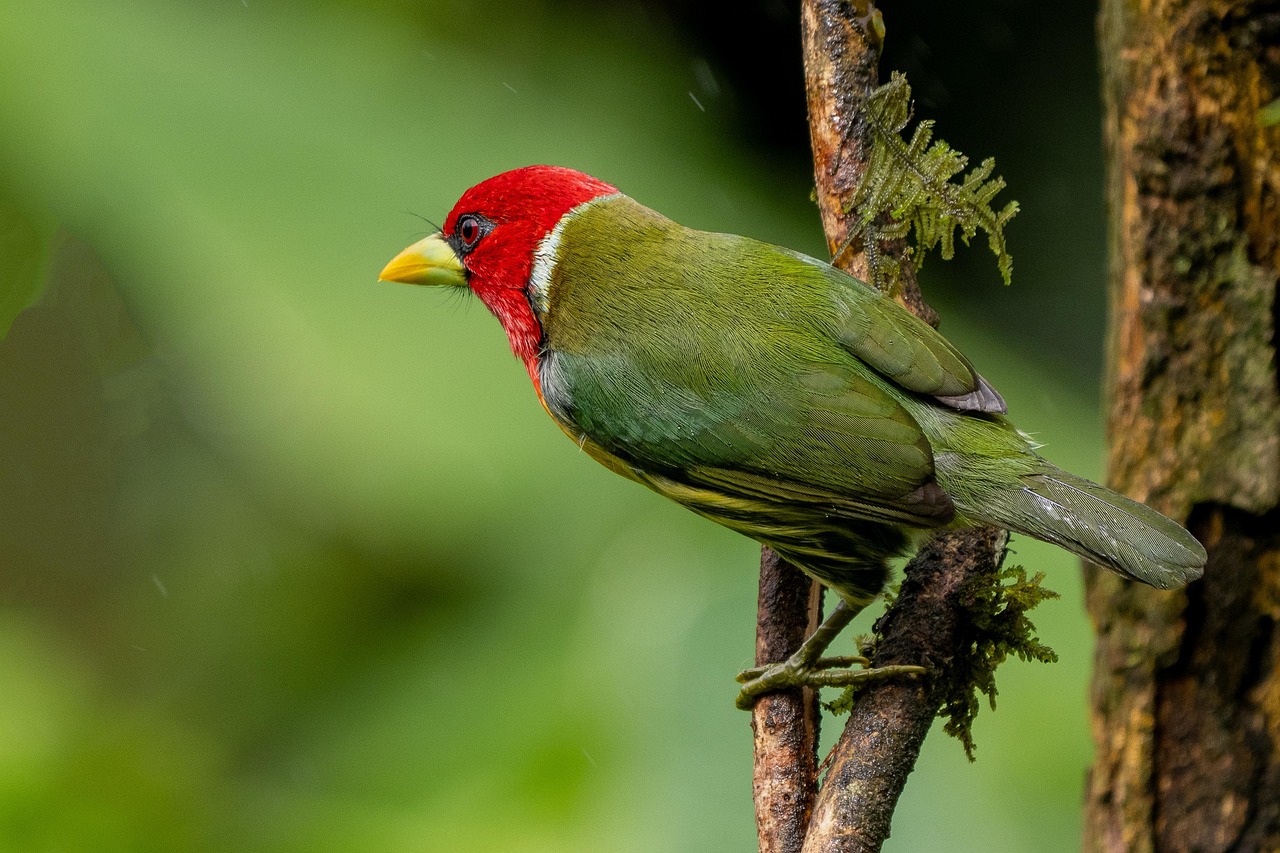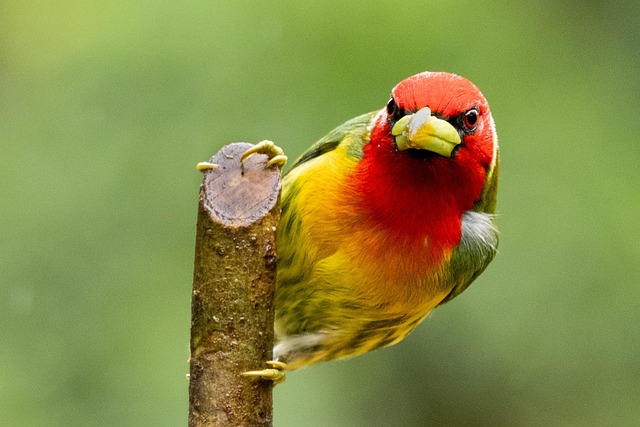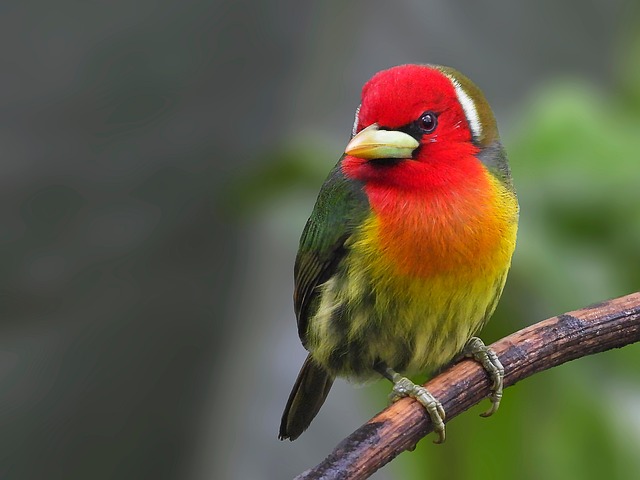Imagine walking through a misty, high-elevation forest. You hear a strange, hollow “hoot” echoing through the trees. Then, a flash of color—a bird so vibrant it looks like a flying jewel, with a head of the deepest ruby-red and a body of emerald-green.
This is the Red-headed Barbet (Eubucco bourcierii), one of the most stunning and fascinating birds in the tropical highlands of Central and South America. But this bird is more than just a pretty face. Its life in the clouds is full of surprising adaptations and crucial ecological roles.
Here are the top facts you didn’t know about this incredible bird.
1. It’s a Bird of Two Completely Different Faces
This is the most striking fact about the Red-headed Barbet. If you saw a male and a female side-by-side, you would be forgiven for thinking they were two entirely different species. This is a classic example of extreme sexual dimorphism.
- The Male: This is the one that gives the species its name. He is unmistakable, boasting a brilliant, fiery scarlet-red head that fades into an orange-gold chest.
- The Female: She is a master of camouflage. She completely lacks the red head, and is instead a blend of olive-green with a distinct, powder-blue patch on her cheek and a pale, yellowish-green throat.
This difference is all about survival and mating: the male uses his color to attract a mate and defend his territory, while the female’s green plumage keeps her perfectly hidden while she incubates her eggs.

2. It Literally Has a “Beard”
What makes a barbet a “barbet”? The name comes from the French word barbe, meaning “beard.”
If you look closely at a Red-headed Barbet (or any barbet), you’ll see a cluster of stiff, bristle-like feathers surrounding the base of its thick, stout bill. These are called rictal bristles. Scientists believe these “whiskers” serve multiple purposes: they may help protect the bird’s eyes from insect parts or fruit pulp, and they could also act like tiny “feelers” in the dark, helping the bird navigate its nest cavity.
3. They Are Home-Builders for the Forest
This is perhaps their most important—and least-known—role. Red-headed Barbets are primary cavity nesters. This means that, like woodpeckers, they use their strong, sharp bills to excavate their own nest, digging a deep hole into the soft, dead wood of a rotting tree snag.
A pair will work together to dig the cavity, which can take several weeks. But the story doesn’t end there. After the barbets have raised their young and moved on, these abandoned nest holes become essential, ready-made homes for dozens of other forest creatures, such as wrens, swallows, and other small birds that cannot dig their own. They are true “ecosystem engineers.”
4. They Live in the Clouds
You won’t find this bird on a tropical beach. The Red-headed Barbet is a high-altitude specialist. It lives in the humid, mist-shrouded “cloud forests” of the Andes, from Costa Rica and Panama down through Colombia, Ecuador, and Peru.
They thrive in these cool, wet, high-elevation forests, typically between 2,500 and 7,500 feet. They are a true ghost of the mountains, often heard before they are seen, their bright colors a sudden, dazzling contrast to the misty-green foliage.

5. Their “Song” Isn’t a Song at All
Despite their flashy looks, these birds aren’t melodic singers. Their call is a very distinctive, non-musical sound.
It’s a low, hollow, and surprisingly resonant “hoot” or “pop” that is repeated in a long, accelerating series: “kwo-kwo-kwo-kwo-kwo…” or “hoo-hoo-hoo-hoo.” This sound, which can be mistaken for a small owl, is one of the most common and recognizable sounds of the Andean cloud forest.
Quick Facts: The Red-headed Barbet
- Scientific Name: Eubucco bourcierii
- Habitat: Humid, high-elevation cloud forests and montane forests.
- Range: Costa Rica, Panama, Colombia, Venezuela, Ecuador, and Peru.
- Diet: Primarily fruit (frugivore), especially figs, but will also eat insects.
- Key Feature: Extreme difference in color between the red-headed male and the green-headed female.
Conclusion: A Vital, Vibrant Jewel
The Red-headed Barbet is a perfect example of tropical beauty. It’s a living work of art, a dedicated parent, and a vital home-builder for its entire forest community. More than just a pretty face, it’s a crucial thread in the rich, misty tapestry of the cloud forest.
Have you ever been lucky enough to see a Red-headed Barbet? Or is this vibrant bird now on your “must-see” list? Let us know in the comments!


